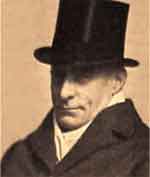|
 Walter Richard Sickert was a nineteenth and early twentieth-century English Impressionist painter. Known for his eccentricity, Sickert used his love of city life to focus on everyday people engaged in ordinary activities in an urban setting. Born to an artistic father, the Danish-German Oswald Sickert, young Walter and his parents left Germany for England, following an offer his father received to participate in the English Great Exhibition. Despite displaying an early talent and interest in art, Sickert initially sought a career in the theatre as an actor. After a few small and insignificant parts, he became drawn to art once again, for a time serving as assistant to James McNeil Whistler. His interest sparked, he decided to venture to Paris and absorb the height of the Impressionist movement. While there, he met and was profoundly influenced by Edgar Degas. Walter Richard Sickert was a nineteenth and early twentieth-century English Impressionist painter. Known for his eccentricity, Sickert used his love of city life to focus on everyday people engaged in ordinary activities in an urban setting. Born to an artistic father, the Danish-German Oswald Sickert, young Walter and his parents left Germany for England, following an offer his father received to participate in the English Great Exhibition. Despite displaying an early talent and interest in art, Sickert initially sought a career in the theatre as an actor. After a few small and insignificant parts, he became drawn to art once again, for a time serving as assistant to James McNeil Whistler. His interest sparked, he decided to venture to Paris and absorb the height of the Impressionist movement. While there, he met and was profoundly influenced by Edgar Degas.
Unlike the soft intensity of the Parisian palette, Sickert adapted the tenets of Impressionism to suit his more eccentric personality. He tended to favor somber tones, colors more often found in lower-class urban London and Paris settings. He soon returned to Paris for further study and inspiration. While there he acquired a mistress and possibly an illegitimate son. During the years leading up to World War I, Sickert heaped praise on European avant-garde artists, and joined their ranks in founding the Camden Town Group of British painters. The group focused on post-Impressionistic theory and technique.
Sickert's personal life was equally eccentric. He married three times. His third wife was also a painter, named Therese Lessore. He also harbored a deep interest in the Jack the Ripper crimes, even staying extensively in a room said to have been rented by the murderer. His interest in the infamous criminal remained attached to his name and reputation for more than a century. Sickert was featured in a novel concerning Jack the Ripper, and in recent years detective-turned-author Patricia Cornwell accused Sickert of being the notorious Jack himself. After years of study and investigation, Cornwell wrote a non-fiction book based on her research. While it captured the popular imagination when first published, art critics and historians have derided Cornwell for shoddy research and wishful thinking. Some accuse her of slandering Sickert's reputation decades after his death.
Although Sickert continued to paint, even into later life, the latter part of his career was spent focused more on teaching and writing, rather than painting. In 1924 he became an associate of the Royal Academy, and was awarded the position of academician a decade afterwards. Late in life the National Gallery in London honored Sickert with a large, one-man exhibition. It was a fitting capstone of a life dedicated to art and education. The following year, 1942, Sickert died in Bath, England.
Image: Walter Sickert in his later years.
|